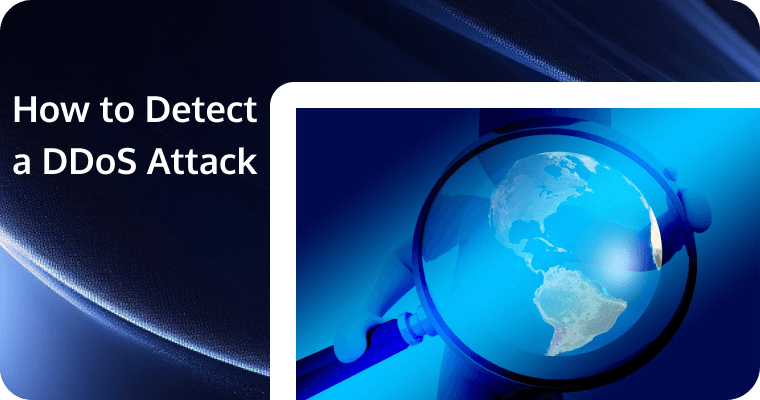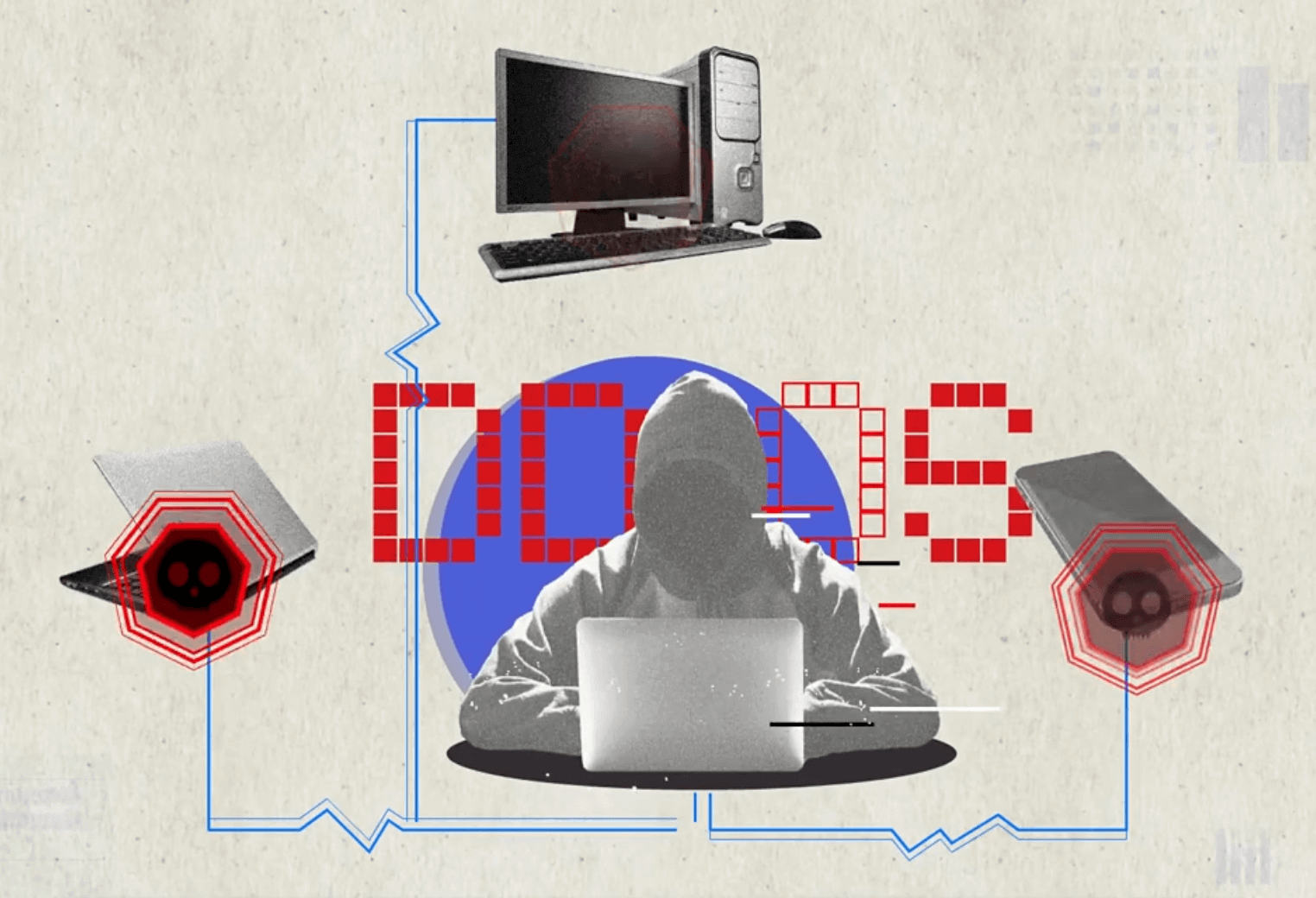How to Detect a DDoS Attack: Signs Getting DDoSed

When websites suddenly become unresponsive or applications start failing, many organizations don't immediately suspect they're under attack. By the time error messages appear and customers complain, a DDoS attack is often already in full swing. The earliest warning signs are usually subtle: occasional error messages, slightly slower loading times, or intermittent connection problems.
These warning signs are easy to miss or dismiss as normal technical issues. However, recognizing these early indicators can make the difference between a minor disruption and a complete service outage. Modern attacks strike quickly and often disguise themselves as regular traffic, making them particularly challenging to identify.
This guide explains how to spot the warning signs of different types of DDoS attacks and what these symptoms can tell you about the attack you're facing.
What is a DDoS Attack?
A DDoS (Distributed Denial of Service) attack attempts to make a website or online service unavailable by overwhelming it with traffic from multiple sources. Unlike regular traffic spikes, DDoS attacks use networks of infected computers (called botnets) to flood targets with more requests than they can handle.
These attacks have grown increasingly powerful and sophisticated. Early DDoS attacks were fairly simple, but today's attacks often combine multiple methods and target specific vulnerabilities in websites or applications. Some attacks focus on overwhelming your internet connection, while others target the servers themselves or specific features of your application.
Many attacks now use a two-pronged approach: launching a large, obvious attack to distract security teams while simultaneously conducting more subtle attacks against critical systems. This makes detection and response significantly more challenging.
Why DDoS Attacks Matter?
The impact of DDoS attacks extends far beyond temporary inconvenience. For businesses, even short outages directly affect revenue and customer trust. E-commerce sites lose sales, subscription services face cancellations, and any online business risks damage to its reputation when services become inaccessible.
Recovery often proves costly and time-consuming. Beyond immediate financial losses, businesses frequently discover that customers who switch to competitors during outages rarely return, creating long-term revenue impacts.
Perhaps most concerning, attackers increasingly use DDoS attacks as smokescreens for other malicious activities. While IT teams focus on restoring service, attackers may attempt to breach security systems, steal data, or install malware. By the time the DDoS attack is resolved, the real damage may already be done.

Network-Level Warning Signs
Unusual Traffic Patterns
Normal website traffic follows predictable patterns throughout the day and week. Sudden, unexplained changes in these patterns often signal an attack in progress.
Warning Sign: Traffic suddenly increases dramatically from countries or regions where you don't normally have many users.
What's Happening: Attackers often use compromised computers from specific geographic regions. If your website traffic suddenly shows a massive increase from a country where you don't do business, it's likely an attack rather than genuine interest.
Warning Sign: Your analytics show strange uniformity in visitor information (everyone suddenly using the same browser version or device type).
What's Happening: Real users use diverse browsers, devices, and operating systems. When visitor data suddenly becomes unusually uniform, it typically indicates automated attack traffic rather than actual people.
Connection Problems
How users connect to your website can reveal certain types of attacks.
Warning Sign: Users report intermittent connection problems while your server appears to be handling an unusual number of partially-completed connections.
What's Happening: This often indicates a "SYN flood" attack. The attacker starts many connections but never completes them, leaving your server waiting and tying up resources that could serve legitimate users.
Warning Sign: Unexpected traffic spikes to specific server ports, particularly DNS (port 53) or NTP (port 123).
What's Happening: These signs point to an "amplification attack" where attackers use public internet services to multiply their attack power. They send small requests that generate much larger responses, all directed at your system.
Server-Level Warning Signs
Resource Overload
Different attacks create distinct patterns in how they consume server resources.
Warning Sign: Server CPU usage jumps to 100% while the amount of incoming traffic remains relatively normal.
What's Happening: This suggests an attack targeting resource-intensive features of your website or application. Instead of simply flooding your network, attackers are forcing your server to perform complex operations repeatedly, exhausting its processing power.
Warning Sign: Server memory usage steadily increases until reaching critical levels.
What's Happening: Some attacks target functions that consume large amounts of memory. Attackers might repeatedly request actions that require your server to load large files or datasets into memory, eventually exhausting available resources.
Partial Service Outages
How your website or application degrades during an attack can provide clues about what's being targeted.
Warning Sign: Users can browse your website but cannot log in to their accounts.
What's Happening: Attackers may specifically target authentication systems, which typically require more server resources than simply displaying content. By focusing on login processes, attackers can prevent users from accessing accounts without having to take down the entire site.
Warning Sign: Static content (like images and text) loads normally while interactive features fail.
What's Happening: Sophisticated attacks often target specific components rather than the entire website. By focusing on database operations or application servers while ignoring static content, attackers can disable core functionality while basic monitoring might still show the site as operational.
Application-Level Warning Signs
Performance Issues
Modern applications provide detailed performance data that can reveal targeted attacks.
Warning Sign: Specific features of your application become extremely slow while others work normally.
What's Happening: Today's attackers often target specific vulnerabilities or resource-intensive functions. For example, they might flood your search feature with complex queries while leaving other parts of the application untouched.
Warning Sign: Database errors suddenly increase across multiple services or features.
What's Happening: Some attacks target database systems by repeatedly triggering expensive queries or operations that lock tables. This creates a cascade of failures across features that depend on database access.
User Experience Problems
Sometimes your users notice problems before your monitoring systems do.
Warning Sign: Users report being randomly logged out or unable to maintain sessions.
What's Happening: Attackers may target systems that manage user sessions. This causes legitimate users to be disconnected or prevents them from staying logged in, creating frustration without completely disabling the service.
Warning Sign: Mobile app users report problems while website users don't (or vice versa).
What's Happening: Different versions of your service (mobile vs. web) often use different systems or APIs. Attackers may target specific platforms, causing problems for some users while others experience normal service.
How to Detect DDoS Attacks?
Even without specialized security tools, organizations can implement effective detection methods:
- Know what's normal. Establish baselines for typical traffic patterns, server performance, and user behavior. Understanding what's normal makes it easier to spot what's abnormal. Keep track of how traffic varies by time of day, day of week, and during special events.
- Watch for behavioral oddities. Look beyond simple traffic volume. Are users following typical navigation patterns? Is the ratio between different activities (browsing vs. purchasing, reading vs. commenting) consistent with normal patterns?
- Monitor resource usage relative to traffic. If server CPU usage jumps 300% while traffic increases only 20%, something unusual is happening. These disproportionate changes often reveal attacks that target application functionality rather than simply flooding with traffic.
- Create "trap" pages. Consider creating pages or features that real users would never access but that automated scanning tools might find. Traffic to these decoys can provide early warning of malicious activity.
- Enable alerts for unusual patterns. Most hosting providers and analytics platforms can alert you to sudden traffic spikes or performance problems. Configure these alerts to notify you when metrics deviate significantly from normal patterns.
Conclusion
Detecting DDoS attacks before they completely disable your services requires attention to subtle warning signs across your network, servers, and applications. The most damaging attacks often display warning signs that go unrecognized until services fail completely.
By understanding what different symptoms indicate about potential attacks, even small organizations without specialized security teams can identify threats earlier and take protective measures before experiencing complete outages.
While early detection is crucial, having robust protection in place offers the best defense against today's sophisticated DDoS threats. EdgeOne provides comprehensive protection against the full spectrum of DDoS attacks identified in this article, from network-level volumetric floods to sophisticated application-layer attacks.
EdgeOne DDoS Protection: Beyond Detection to Complete Defense
EdgeOne's DDoS protection platform automatically monitors network traffic patterns and instantly activates mitigation when attack indicators are detected. The system provides multi-layered defense against all attack types mentioned in this guide:
- Network-layer protection absorbs and filters massive volumetric attacks before they reach your infrastructure
- Protocol-level defense identifies and blocks SYN floods and other connection-based attacks
- Application-layer intelligence distinguishes between legitimate users and attack traffic targeting specific website functions
- Behavioral analysis identifies suspicious patterns even when attackers attempt to blend with normal traffic
Take Action Against DDoS Threats
Don't wait until your business experiences a damaging DDoS attack. EdgeOne offers a free trial with no commitment required, allowing you to experience enterprise-grade DDoS protection for your websites and applications.
Visit our website to start your free trial today or contact our security experts to learn how EdgeOne can be customized to your specific needs. With DDoS attacks becoming more frequent and sophisticated, proactive protection isn't just an option—it's a business necessity.
Frequently Asked Questions
Q1: What's the difference between normal traffic spikes and DDoS attacks?
A1: Legitimate traffic spikes typically happen for clear reasons (like marketing campaigns or sales), show normal variety in user characteristics, and grow relatively gradually—while DDoS traffic appears suddenly with unusual uniformity and often comes from unexpected geographic locations.
Q2: Can DDoS attacks target specific parts of a website?
A2: Yes—modern attackers often target specific resource-intensive functions like search features, login systems, or payment processing while leaving other parts working normally, making the attack harder to detect while still disrupting essential services.
Q3: How quickly can a DDoS attack take down a website?
A3: Large-scale attacks targeting your internet connection can cause outages within minutes, while more targeted application attacks might gradually degrade performance over hours before causing complete failure.
Q4: Why do some DDoS attacks continue for days without being identified?
A4: Some attacks intentionally stay just below obvious detection thresholds, causing slowdowns rather than complete failures; these "low and slow" attacks may continue for extended periods before being recognized as deliberate attacks rather than technical problems.
Q5: What metrics should I monitor to detect DDoS attacks early?
A5: Watch for unusual traffic patterns (especially from unexpected locations), sudden performance problems affecting specific features, unusual ratios of traffic types, connection errors, and resource usage that seems disproportionate to visitor levels.

